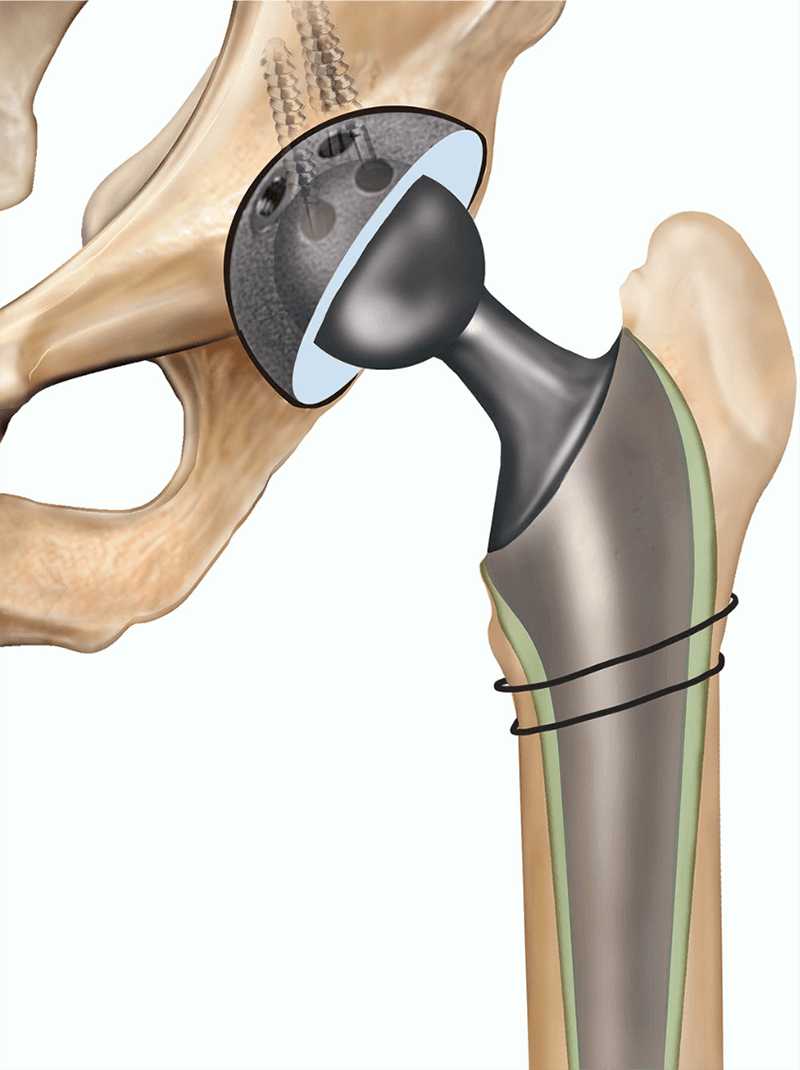total hip replacement in Tunisia
Total Hip Replacement
 If medications, changes in your everyday activities, and the use of walking supports do not adequately help your symptoms, you may consider hip replacement surgery. Hip replacement surgery is a safe and effective procedure that can relieve your pain, increase motion, and help you get back to enjoying normal, everyday activities.
If medications, changes in your everyday activities, and the use of walking supports do not adequately help your symptoms, you may consider hip replacement surgery. Hip replacement surgery is a safe and effective procedure that can relieve your pain, increase motion, and help you get back to enjoying normal, everyday activities.
Hip Anatomy
The hip is one of the body's largest joints. It is a ball-and-socket joint. The socket is formed by the acetabulum, which is part of the large pelvis bone. The ball is the femoral head, which is the upper end of the femur (thighbone). The bone surfaces of the ball and socket are covered with articular cartilage, a smooth tissue that cushions the ends of the bones and enables them to move easily. A thin tissue called the synovial membrane surrounds the hip joint. In a healthy hip, this membrane produces a small amount of fluid that lubricates the cartilage and eliminates almost all friction during hip movement. Bands of tissue called ligaments (the hip capsule) connect the ball to the socket and provide stability to the joint.
Common Causes of Hip Pain
Arthritis is the most common cause of chronic hip pain and disability. Osteoarthritis, rheumatoid arthritis, and traumatic arthritis are the most common forms of this disease.
Osteoarthritis: This is an age-related "wear and tear" type of arthritis. It usually occurs in people 50 years of age and older and often in individuals with a family history of arthritis. The cushioning cartilage on the bones of the hip wears away. The bones then rub against each other, causing hip pain and stiffness. Osteoarthritis may also be caused or accelerated by subtle irregularities in how the hip developed during childhood.
Rheumatoid Arthritis: This is an autoimmune disease in which the synovial membrane becomes inflamed and thickened. This chronic inflammation can damage the cartilage, leading to pain and stiffness. Rheumatoid arthritis is the most common type of a group of disorders termed "inflammatory arthritis."
Post-traumatic Arthritis: This can follow a serious hip injury or fracture. The cartilage may become damaged and lead to hip pain and stiffness over time.
Avascular Necrosis: An injury to the hip, such as a dislocation or fracture, may limit the blood supply to the femoral head. This is called avascular necrosis (also commonly called "osteonecrosis"). The lack of blood may cause the surface of the bone to collapse and result in arthritis. Some diseases can also cause avascular necrosis.
Childhood Hip Disease: Some infants and children have hip problems. Even if the problems are successfully treated during childhood, they may still cause arthritis later in life. This happens because the hip may not grow normally and the joint surfaces are affected.
Replacement Components
Many different types of designs and materials are currently used in artificial hip joints. All consist of two basic components: the ball component (made of highly polished strong metal or ceramic material) and the socket component (a durable cup of plastic, ceramic, or metal, which may have an outer metal shell). The prosthetic components may be "press-fit" into the bone to allow your bone to grow onto the components or they may be cemented in place. The decision to press-fit or cement the components is based on a number of factors, such as the quality and strength of your bone. A combination of a cemented stem and an uncemented socket may also be used. Your orthopedic surgeon will choose the type of prosthesis that best meets your needs.
Procedure
The surgical procedure takes a few hours. Your orthopedic surgeon will remove the damaged cartilage and bone, then position new metal, plastic, or ceramic implants to restore the alignment and function of your hip.
After surgery, you will be moved to the recovery room where you will remain for several hours while your recovery from anesthesia is monitored. After you wake up, you will be taken to your hospital room.
How Your New Hip is Different
You may feel some numbness in the skin around your incision. You may also feel some stiffness, particularly with excessive bending. These differences often diminish with time, and most patients find them minor compared to the pain and limited function they experienced before surgery. Your new hip may activate metal detectors required for security in airports and some buildings. Inform the security agent about your hip replacement if the alarm is activated. You can ask your orthopedic surgeon for a card confirming that you have an artificial hip.
Protecting Your Hip Replacement
There are many things you can do to protect your hip replacement and extend the life of your hip implant.
Participate in a regular light exercise program to maintain the strength and mobility of your new hip.
Take special precautions to avoid falls and injuries. If you break a bone in your leg, you may require more surgery.
Make sure your dentist knows that you have a hip replacement. Talk with your orthopedic surgeon about whether you need to take antibiotics prior to dental procedures.
See your orthopedic surgeon regularly for routine follow-up examinations and x-rays, even if your hip replacement seems to be doing fine.